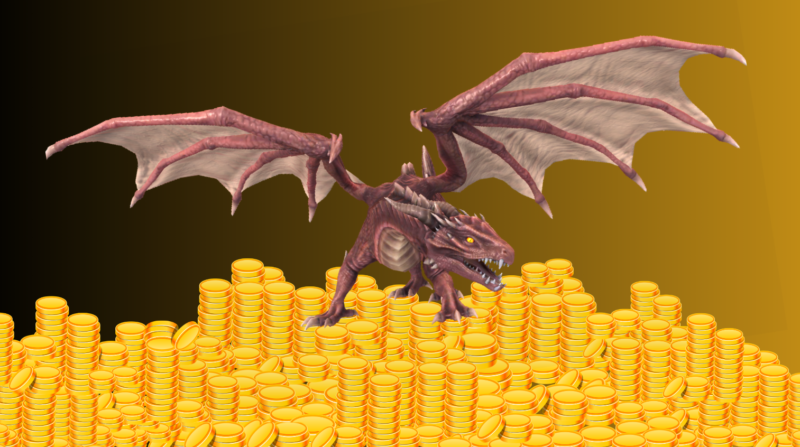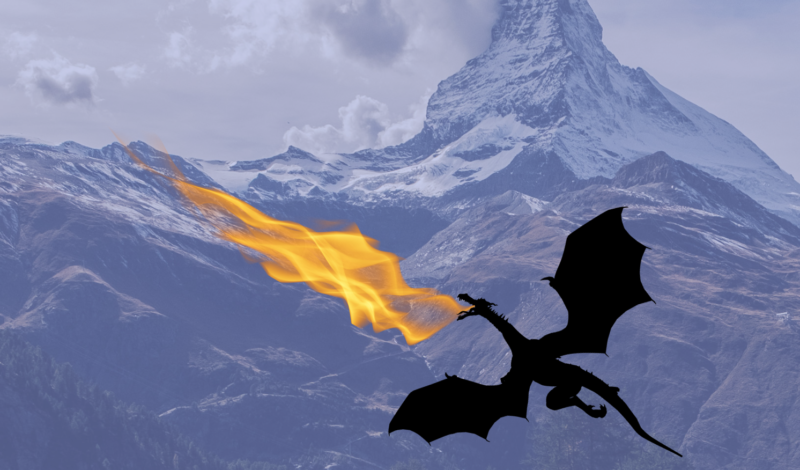Gods and Monsters: Dragons
Eve Volungeviciute
As we continue to explore mythological creatures, I thought for a little while which one to research next. After all, there is so much choice, it’s easy to get overwhelmed. I ended up landing on a not so obvious choice, but one that makes a lot of sense thinking about it. Dragons are creatures with a surprising amount of information about them and I’d like to share at least some of it with you. Let’s begin!
Origins
The English language first saw the word ‘dragon’ in the early 13th century from Old French, which comes from dracō (Latin), but dragons appear in pretty much all cultures of the world. Some of the first accounts are in ancient Near East and ancient Mesopotamian art and literature. Anthropologists have multiple hypotheses and theories, with David E. Jones being a more well-known one.
In his book An Instinct for Dragons, he discusses that humans inherited instinctive reactions to snakes, large cats and birds of prey. In a study Jones discusses in the book, 39 out of a hundred people are afraid of snakes, especially children. It’s interesting considering that all earliest depiction of dragons resemble snakes or snakelike attributes. Jones suggests that the prevalence of dragons in nearly every culture is a reflection of humans and their innate fear of snakes.

Various mythologies across the world
In Egyptian mythology, Apep or Apophis is described as a large serpentine creature residing in the Duat (the Egyptian Underworld). Some accounts state Apep is the length of the height of eight men with a head that’s made of flint. Thunderstorms and earthquakes were believed to have been caused by its roar. Pyramid Texts feature Denwent, a giant serpent with a body made of fire.
Ancient people throughout the Near East believed in creatures now called dragons. They didn’t know about dinosaurs and similar creatures of the distant past. Mesopotamian literature is full of references to dragons, both benevolent and malevolent.
The representation of the Korean dragon is quite similar to East Asian ones, especially Chinese and Japanese. Very rarely an orb (yeouiju) would be featured that the dragon would carry in its hand. This orb was said to provide omnipotence and power of creation to the one worthy of carrying it. Only four-toed dragons were deemed wise and worthy enough to do so, as they had thumbs which they could hold the orb with. Dragons of Korean mythology are portrayed as harmless and were considered the bringers of clouds and rain. They were thought to have resided near lakes, rivers and other bodies of water. Human journeys to realms under the sea were a common part of the Korean lore.
Japanese myths follow a similar depiction of dragons, with them being primarily water creatures and possessing serpentine-like features. They are also mentioned to have three claws as their consistent characteristic. Much of the portrayal of dragons ties into that of China, a country where they were essentially worshipped due to symbolising the Emperor’s power. This became a tradition lasting multiple dynasties and generations. The same focus on the water elements is prevalent, which is an interesting motif among all the North-Asian portrayals of the entities.
Travelling more to the Western side, the Welsh have myths around dragons, especially that of the red dragon defeating the white dragon, the former being on their flag as the national symbol. Germanic dragons are often pictured in fairytales as antagonists and associated with piles of gold they’re guarding up on a remote hill. They are said to have breathed fire and poison, which is yet another link to their snake origins, with Beowulf being one of the earliest if not the earliest example of a fire-breathing dragon ever depicted.
Naturally, dragons were also featured in Greek mythology. Interestingly, the hydra was a water creature with serpentine-like features; however, unlike Asian portrayals where they coexisted with the humans, the hydra is monstrous and had to be slain by Heracles to be defeated. This could be argued to be a tie-in to the hero’s journey trope, which was extremely common in Western lore.
Appearance
As one would expect considering the variety of dragon mythology depending on the region, their physical appearance is depicted quite differently as well. Dragons of western cultures have mainly been described as winged, with horns and breathing fire, while dragons of eastern cultures are normally wingless, four-legged serpentine-resembling entities. Their appearance is a mix of feline, mammal, reptilian, and avian features – some now-extinct crocodiles are the most similar-looking. Modern representations tend to show them as much larger than humans while older illustrations show them to be nearly the same size.
On the other hand, eastern dragons were wingless, although still fast fliers. They had manes and – like fairies – were depicted in various shapes, sizes and colours. One of the more common colour combinations was red and gold.

Modern day portrayals
Surprisingly enough, dragons are quite prevalent in contemporary fiction. One doesn’t need to look far for examples – most famous fantasy franchises have some. Harry Potter features them in nearly half of the books, focusing on a more malevolent version of the spectrum. The Hobbit also villainises dragons, with Smaug being the main antagonist of the book. Game of Thrones, both the book and the TV series, heavily features dragons, including one of the most major storylines.
Merlin is perhaps a more badly-CGI’ed example; however, it’s interesting to see the titular character go to the dragon for advice, which is perhaps a closer connection to its Eastern counterpart.
As always, Disney provides another example with one of its older classics Sleeping Beauty (my personal favourite animated Disney movie), where Maleficent transforms into a giant purple dragon that the prince has to beat to get to the princess and give her true love’s kiss. Enchanted pays homage to this, with a bit of a feminist take on the trope.

